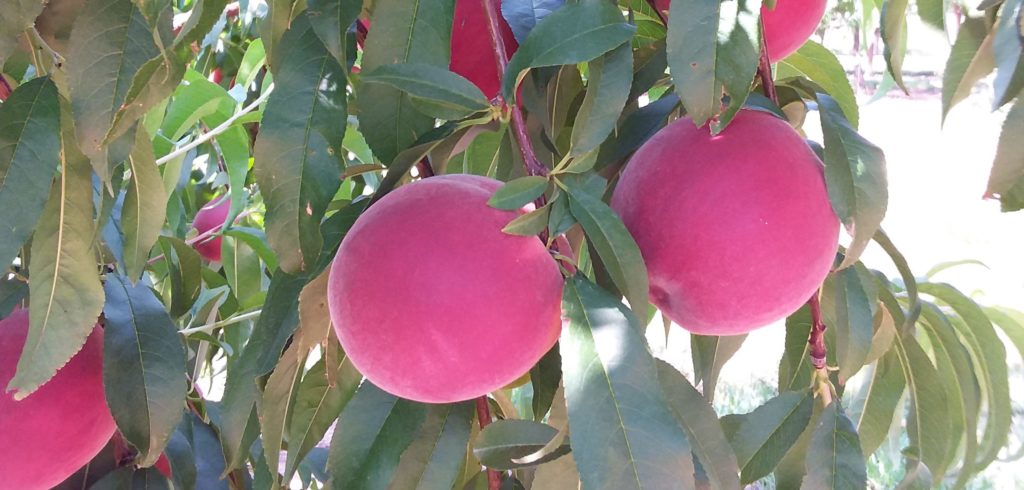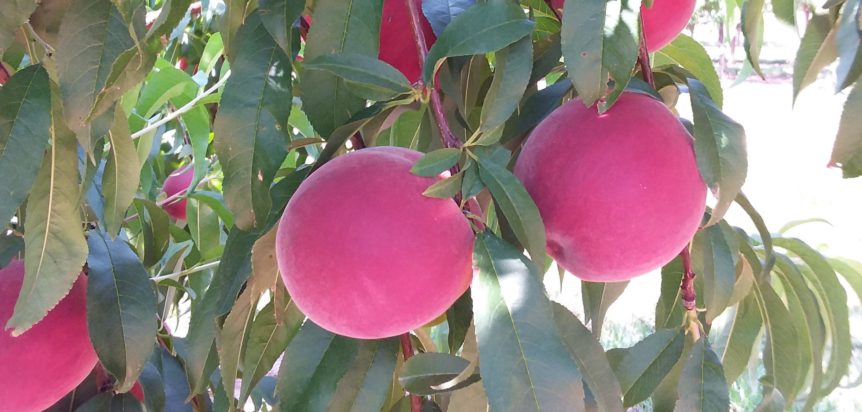
By Frank Giles
When Ksenija Gasic interviewed for her position at Clemson University in 2007 to reboot the school’s peach breeding program, she saw an omen of things to come. A late freeze that year had wiped out the peach crop on campus and across the state.
Building a Better Program
Gasic was hired and joined Clemson as its peach breeder in 2008. The school had not had a breeding program for 20 years, so she was building a program from scratch. When she started the program, the first major goal was breeding brown rot and bacterial spot disease tolerance into new varieties.
“There were a lot of great private and public peach breeding programs in the United States, some that were 100 years old and well established,” Gasic said. “So, it was not easy to join the party, so to speak. There are some excellent programs in California, but when you bring those varieties here, they run into problems because of our climate in the Southeast.
“The goal at the beginning of my program was to merge the quality traits growers were looking for with disease tolerance. Breeding a peach variety takes about 15 to 20 years from when you make your first cross.”
In April of this year, Gasic’s program received patents for its first two peach varieties with another patent pending. She was proud to bring growers Clemson’s first selections on the shorter end of the breeding time horizon after 16 years of work.
Changing Chill Hours
Gasic knew from the start that her breeding program would need to address the warmer winters and spring freezes that were taking entire peach crops out. While the chill time for standard varieties was 1,000 hours, the seasons when that requirement is met are coming less often.
“When I was interviewing for this job, there was basically nothing to see because the freeze had killed off the crop. Then, 10 years later in 2017, we had another freeze that took the crop,” she said. “We had another in 2021 that was not quite as severe, but it still took 80% to 90% of the crop. And again, last year, we lost the crop.
“When I started my breeding program, most varieties required 800 to 1,000 chill hours, which was fine. But, today, we are struggling with varieties that require 800 hours. So, our breeding efforts now are looking for varieties that are 600 to 800 hours, or even lower, to be sure we get the right chilling in the winter to achieve better timing for the bloom.”
Breeding a climate-resilient peach variety is a very complicated task and involves more than just chill hour requirements. Gasic said it’s a three-part equation — hitting the targeted chill hours, having the heat units accumulation to achieve desired bloom timing and producing a fruitlet that has some tolerance to freezes. These are all necessary while producing all the other traits growers want, such as yield and quality.
The recently patented CaroRes Wonder has a chilling requirement of 500 hours. The other patented variety, EveRes Ruby, requires 800 hours as does CaroRes Delight, which is patent pending.
There has been some discussion that the traditional chill hour requirement should be updated to a more precise way of measuring needed cold to set up a good crop. Chill portion is a measure of time that trees experience temperatures between 32 and 47 degrees Fahrenheit.
“Chill hours are simple because you just count how many hours you have below 47 degrees,” Gasic said. “Chill portion is more reflective of how the tree reacts to cold. Basically, anything below 32 degrees doesn’t count and is ignored by the tree. So, the chill portion accounts for the time when temperatures are between 47 and 32 degrees. If we achieve 55 chill portion hours, we feel pretty good about it.”
Good Setup for 2024 Season
After last year’s freeze disaster, the good news going into the 2024 crop was that winter was more normal and there were no spring freezes. This bodes well for this year’s production.
“We had a great winter, and the cold was steady and stayed in the 47-to-32-degree range,” Gasic said. “That was high-quality chilling and we had great months for it in December and January.”
Trees were accumulating adequate heat units in the spring to help push bloom and fruit ripening along, which should also encourage a more uniform good harvest.










